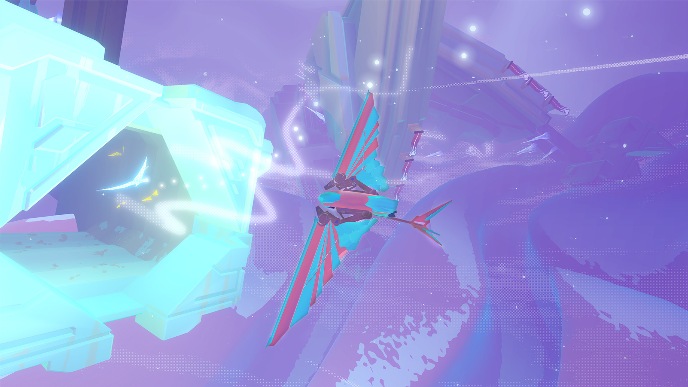Innerspace: Beautiful, Rapturous and Painfully Disorienting

One of the most distressing moments in cinema history is the final act of 2001: A Space Odyssey. We travel, in first-person view, down an infinite tunnel of seething light. We are following our protagonist, Dave, and the implication is that he is being thrown beyond the realm of mortal knowledge. This is a transformative moment, and it’s dizzying, and after the first few moments we, as viewers, come to realize that this is a goddamn nightmare. It’s beyond mortal knowledge because we’re not meant to know. This experience, as sublime as it is, is not meant for us because we’re not equipped for it.
This was also my experience with Innerspace.
Much like Dave in 2001, I found my experience to be rapturous. Innerspace has you flying around a strange, beautiful world that evokes a deep, complex history. You’re a little robotic helper for a weird pseudo-boat creature that’s trying to reconstruct the history of this world. There are orbs everywhere, and there are doors, and there are creatures from some sort of archetypal Time Before Your Time, and all of these things vaguely cohere into some kind of narrative about the history of this place that you’ve only experienced for a moment. There’s story to be worked through (which my editor didn’t care for), but my time with the game wasn’t focused on that. I cared about the flying.
Innerspace gets flying right. They did the damn thing. You have just enough control to feel the wind whizzing by your face when you skip across the stone surface of a megamonolith, and it’s just arcadey enough that you don’t worry about smashing into that wall when you make a miscalculation. It takes some getting used to, but the lack of fuel, hit points, or any of the other markers of traditional flying mechanics is a welcome absence. Innerspace wants you to feel comfortable flying, and it doesn’t try to get in your way.
It also wants you to get used to diving. The little plane creature that you embody is at home in the sea as much as the air, and you can seamlessly drop into the sea from your flight path anytime you want. Then, when you’re beneath the waves, you can soar up toward the surface and engage your flight ability. It’s like being a dolphin that suddenly grows wings at the apex of its leap, and it feels amazing.
